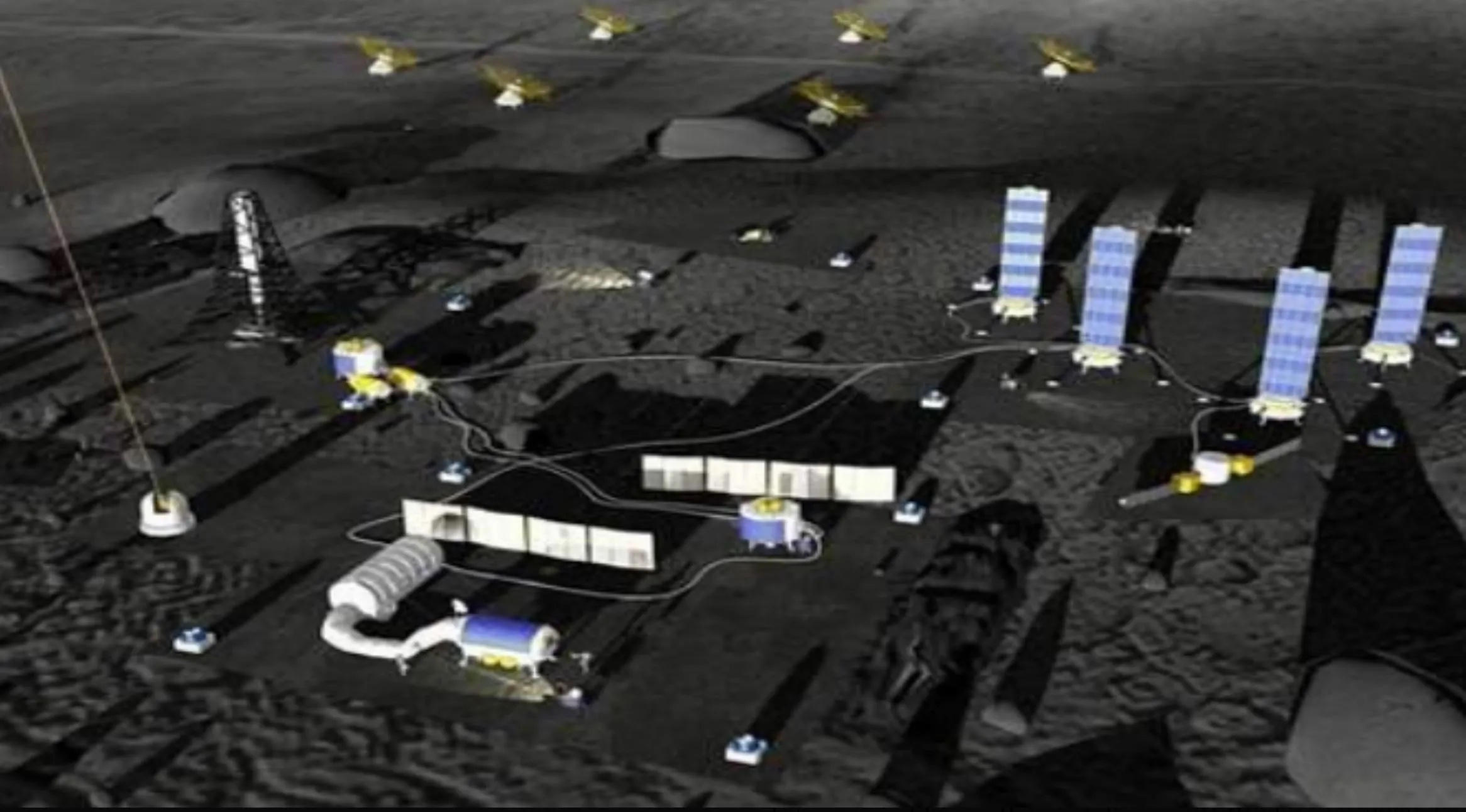30.05.2023

An artist conception of the International Lunar Research Station (ILRS), post-2030. Credit: CNSA/CLEP
HELSINKI — China’s human spaceflight agency has stated its goal to land astronauts on the moon before the end of the decade.
“Recently, the moon landing phase of China’s crewed lunar exploration program has started. The main goal is to send Chinese astronauts to land on the moon for the first time by 2030,” Lin Xiqiang, deputy director of the China Manned Space Agency (CMSA), told media at a press conference at the Jiuquan Satellite Launch Center May 29.
“Focusing on this goal, the CMSA has started planning, research and construction work on the basis of previous key technical breakthroughs and solution verifications,” Lin said.
“This includes the development of a new generation manned carrier rocket, namely the Long March 10 launch vehicle, a new generation crew spacecraft, a lunar lander, a moon suit and other spaceflight products. The construction of a new launch site and tests on related launch facilities are also underway.”
As previously reported, China has been quietly working on a lunar lander for a number of years and this year unveiled an apparent model of the spacecraft.
A low Earth orbit variant of the rocket newly designated the Long March 10, based on the five-meter-diameter Long March 5, is expected to have a test flight in 2027. A pair of three-stage, triple-core Long March 10 variants for trans-lunar injection (27 tons to TLI) will be used to launch the landing stack and crewed segments of the lunar landing mission. China has already carried out a full scale boiler plate test of the new-gen spacecraft.
China’s coastal Wenchang spaceport is currently being expanded to host commercial launches, and will also be the site for the in-development Long March 10 and the larger Long March 9 rocket.
CMSA also announced May 29 a call for plans for a lunar crew rover, potentially using a commercial development model.
The Harbin Institute of Technology in Heilongjiang, northeast China, recently unveiled a lunar simulation chamber to assist preparations for future lunar exploration.
“The goal also includes carrying out lunar scientific exploration and related technological experiments, mastering key technologies such as Earth-Moon crewed round-trips, lunar surface short-term stays, and human-robot joint exploration as well as completing multiple missions such as landing, roving, sampling, researching and returning, so as to form an independent crewed lunar exploration capability,” said Lin.
The press conference was held ahead of the launch of the Shenzhou-16 crewed mission to the Tiangong space station. Launch is set for 9:31 p.m. Eastern May 29. The crew will be greeted aboard Tiangong by the outgoing Shenzhou-15 crew, which has been in orbit since November.
The crewed landing plan noted by Lin is for two astronauts to conduct a six-hour stay on the lunar surface, with another crew member remaining aboard a service module in lunar orbit.
The short term stay however is linked to a longer term project. The International Lunar Research Station (ILRS) is a Chinese-led initiative which aims to construct a permanent, initially robotic moon base in the 2030s. China is currently attracting members to join an organization established to coordinate the effort, which amounts to a parallel development to the U.S.-led Artemis Program and Artemis Accords.
China’s government has yet to openly and officially approve the crewed landing project, likely because the timeline lies beyond the scope of the current Five-year Plan (2021-2025).
However a space white paper published in January 2022 stated that China will “continue studies and research on the plan for a human lunar landing… and research key technologies to lay a foundation for exploring and developing cislunar space.”
Quelle: SN
+++
China's first manned lunar rover to be driven by two astronauts
The China Manned Space Agency (CMSA) on Monday released an announcement to solicit proposals for the country's first manned lunar rover, which will be driven by two astronauts.
China will land its astronauts on the moon by 2030, and two astronauts will drive a lunar rover for scientific exploration during the mission, according to the announcement.
The current mission design indicates that the manned lunar rover will have functions such as manned driving and riding, lunar surface movement, positioning support and safety assistance, which can help astronauts in terms of movement, communication, exploration and so on, it said.
To pool high-quality resources from the whole society, explore a suitable commercial development mode and improve efficiency, the CMSA solicits proposals from the public and will select the best teams to develop the rover prototype, it added.
The proposals should include task requirement demonstration, overall scheme design, main key technologies, safety and reliability design, the development process, quality and schedule guarantees, a business model, and funding request.
Quelle: Xinhua
